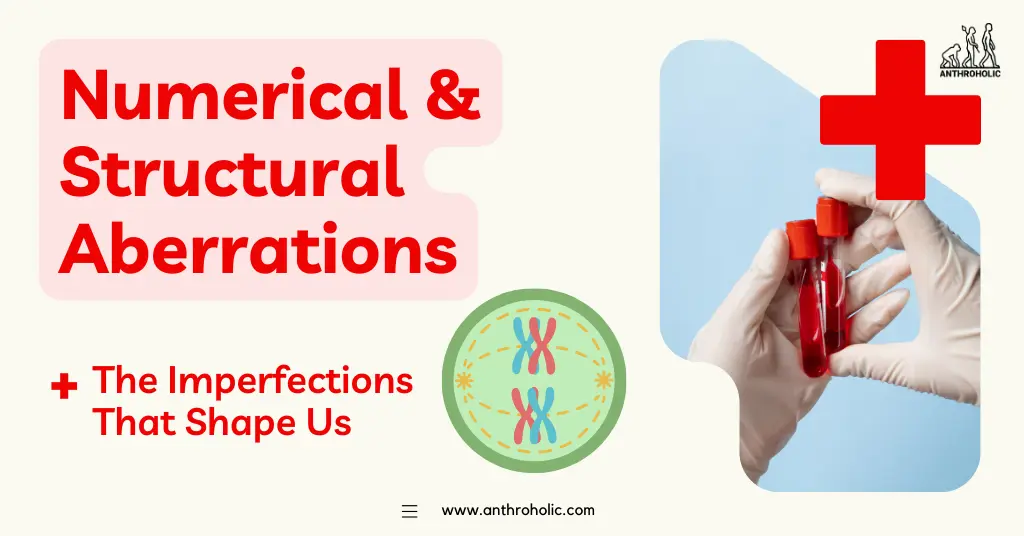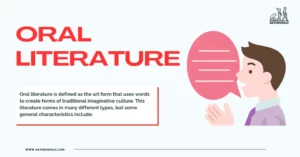AI Answer Evaluation Platform Live Now. Try Free Answer Evaluation Now
Numerical and Structural Aberrations
While the standard blueprint of human genetic material consists of 46 chromosomes, sometimes, nature deviates from this pattern. These deviations, referred to as chromosomal aberrations or disorders, manifest in two primary forms: numerical and structural aberrations. As we delve into the fascinating yet intricate realm of genetic disorders, let’s examine how such anomalies impact human life and the consequences they entail.

Unraveling Numerical Aberrations
A. Counting the Cost: Aneuploidy
Aneuploidy, a numerical aberration, occurs when an individual has an abnormal number of chromosomes [1]. This could be a surplus or deficiency, and it typically results from non-disjunction — the failure of chromosomes to separate properly during cell division. Aneuploidy can present in various forms:
- Monosomy: This refers to the condition where an individual has only one copy of a particular chromosome instead of the usual two. A well-known example is Turner syndrome, characterized by a missing or partially missing X chromosome in females [2].
- Trisomy: Here, an individual has three copies of a specific chromosome. Down syndrome, the most common trisomy, is characterized by an additional copy of chromosome 21 [3].
Table 1: Examples of Aneuploidy Disorders
| Disorder | Chromosomal Abnormality | Symptoms |
|---|---|---|
| Down Syndrome | Trisomy 21 | Intellectual disability, distinct facial features, heart defects |
| Turner Syndrome | Monosomy X | Short stature, infertility, heart defects |
| Klinefelter Syndrome | Trisomy XXY | Male infertility, small testes, less body hair |
B. Polyploidy: Doubling the Blueprint
Polyploidy refers to the presence of more than two complete sets of chromosomes. It’s common in plants but rare in animals and often results in spontaneous abortion in humans [4].
Structural Aberrations: Alterations Beyond the Numbers
Not all chromosomal disorders stem from an excess or deficit of chromosomes. Sometimes, the structure of the chromosomes themselves gets altered.
A. Deletions: When Parts Go Missing
Deletions occur when a portion of the chromosome is lost or deleted. One notable instance is Cri-du-chat Syndrome, resulting from a deletion on the short arm of chromosome 5 [5]. This condition is named for the cat-like cry of affected infants.
B. Duplications: The Extra Factor
Duplications transpire when a section of the chromosome is duplicated, leading to extra genetic material. Charcot-Marie-Tooth disease type 1A is a common neurological disorder caused by a duplication on chromosome 17 [6].
C. Translocations: Swapping Segments
A translocation is an interchange of genetic material between non-homologous chromosomes. They can be balanced (where no genetic material is gained or lost) or unbalanced (which leads to abnormal gene dosage). A classic example is the Philadelphia chromosome, a translocation between chromosomes 9 and 22, often associated with chronic myeloid leukemia [7].
Table 2: Examples of Structural Aberrations
| Disorder | Chromosomal Abnormality | Symptoms |
|---|---|---|
| Cri-du-chat Syndrome | Deletion in chromosome 5 | High-pitched cry, low birth weight, intellectual disability |
| Charcot-Marie-Tooth disease type 1A | Duplication in chromosome 17 | Weakness in legs and feet, muscle loss, sensitivity loss |
| Chronic Myeloid Leukemia | Translocation between chromosomes 9 and 22 | Fatigue, weight loss, pain in the bones or joints |
Conclusion
Our genetic material is a complex script that orchestrates our existence. Numerical and structural chromosomal aberrations, while deviations from the normal script, offer valuable insight into our biology. These aberrations underscore the fragility of human life, yet illuminate the resilience embodied in our continual evolution.
Although they are often associated with negative health impacts, these disorders drive our understanding of genetics, forming the basis for advances in therapeutic interventions. As we continue to probe the genome’s depths, we can hope for a future where these disorders are no longer a source of dread, but potential stepping stones to medical breakthroughs.
References
[1] Hassold, Terry, and Patricia Hunt. “To Err (meiotically) Is Human: The Genesis of Human Aneuploidy.” Nature Reviews Genetics, vol. 2, no. 4, 2001, pp. 280-291. http://dx.doi.org/10.1038/35066065
[2] Gravholt, Claus H., et al. “Clinical Practice Guidelines for the Care of Girls and Women with Turner Syndrome.” European Journal of Endocrinology, vol. 177, no. 3, 2017, pp. G1-G70.
[3] Antonarakis, Stylianos E., et al. “Down Syndrome.” Cold Spring Harbor Perspectives in Biology, vol. 10, no. 10, 2018.
[4] Otto, S.P., and J. Whitton. “Polyploid Incidence and Evolution.” Annual Review of Genetics, vol. 34, no. 1, 2000, pp. 401-437.
[5] Lejeune, J., et al. “[Cri du Chat Syndrome].” Proceedings of the National Academy of Sciences, vol. 48, no. 1, 1963, pp. 25-38.
[6] Lupski, James R., et al. “DNA Duplication Associated with Charcot-Marie-Tooth Disease Type 1A.” Cell, vol. 66, no. 2, 1991, pp. 219-232.
[7] Rowley, Janet D. “Letter: A New Consistent Chromosomal Abnormality in Chronic Myelogenous Leukaemia identified by Quinacrine Fluorescence and Giemsa Staining.” Nature, vol. 243, no. 5405, 1973, pp. 290-293.




